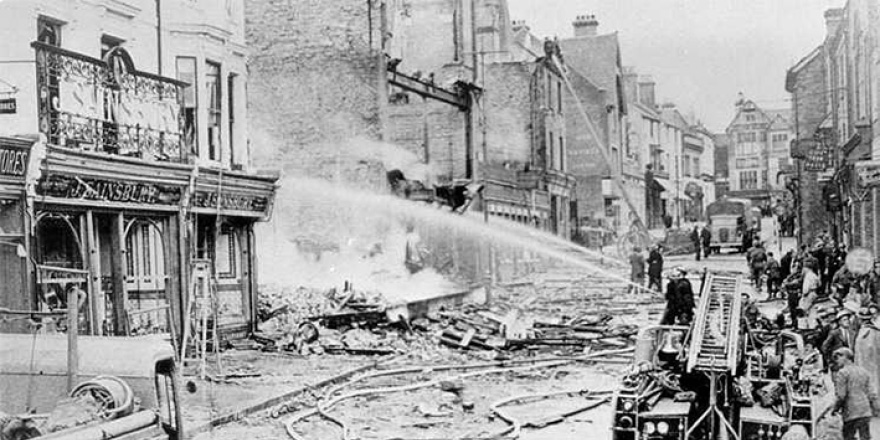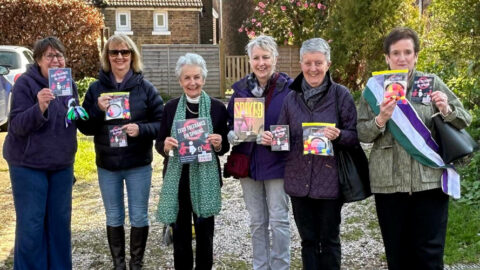Remembering The Whitehall Bombing

This month marks the 75th anniversary of the largest loss of civilian life in Sussex during the Second World War. As the county remembers the tragedy which fell upon the town of East Grinstead, RH History Uncovered looks back on the day when more than a 100 people were killed and injured.
On the evening of July 9 1943, just a little after 5.00pm, and nearly four years into the war, bombs from an enemy aircraft fell on East Grinstead. A lone German bomber pilot who had crossed the Sussex coast enroute for London separated from his comrades, he spotted movement in the town which he thought might be a military operation, he proceeded to drop eight bombs with devastating effect.
The bombs that fell that evening killed 108 people and seriously injured 235 more, the victims caught-up in the devastating attack ranged in age from those of pre-school age through to those in their 80s. One hit the Whitehall Cinema with others landing on shops on the High Street and London Road. Subsequent blasts, a result of the attack swept through shops as they were closing for the day.
Dozens of the unsuspecting victims were children who were watching a matinee performance of Hopalong Cassidy at the Whitehall Cinema on the town’s London Road. A warning had appeared on the screen during the showing that a German air raid was taking place but few of the audience, who were enjoying the screening took any notice of the message and the dangers that it could bring.
The cinema audience totalled around 184 and as the bomb striking the cinema crashed through the roof, it landed into the front of the auditorium. Many cinema-goers were buried under falling masonry and were killed instantly. Canadian troops billeted in the town were drafted in to help with search and rescue efforts alongside civil defence workers as they tackled a site covered in rubble.
The following Wednesday, July 14 was designated as a day of official mourning in the town and during the day some victims were laid to rest in a mass grave in Mount Noddy Cemetery, whilst other victims did have private burials. The remembrance service paying tribute to the victims and their families was attended by hundreds of mourners and was conducted by the Bishop of Chichester.
Today, the loss of life is marked with a stone plaque on the south wall of St Swithun’s Church, it commemorates the 108 killed and 235 injured when the bombs fell on East Grinstead. Each year that passes, the victims are honoured, and this year is no different as the community of East Grinstead prepares to remember those who lost their lives and the families whose lives changed forever.
By Jacob White





